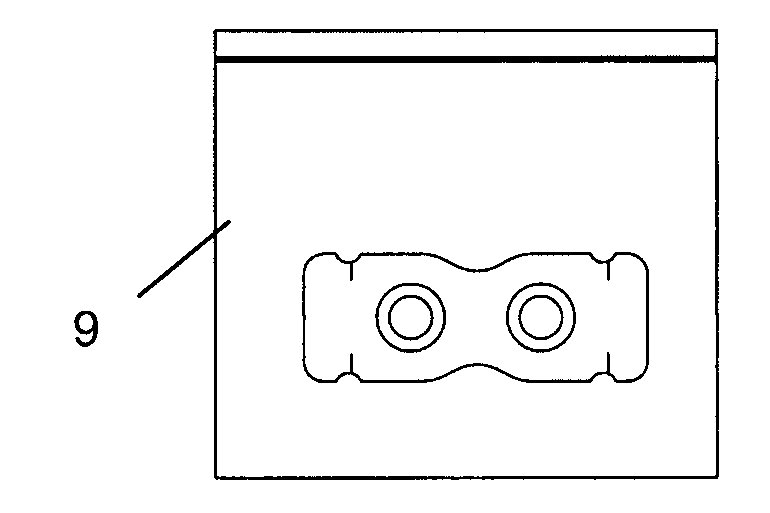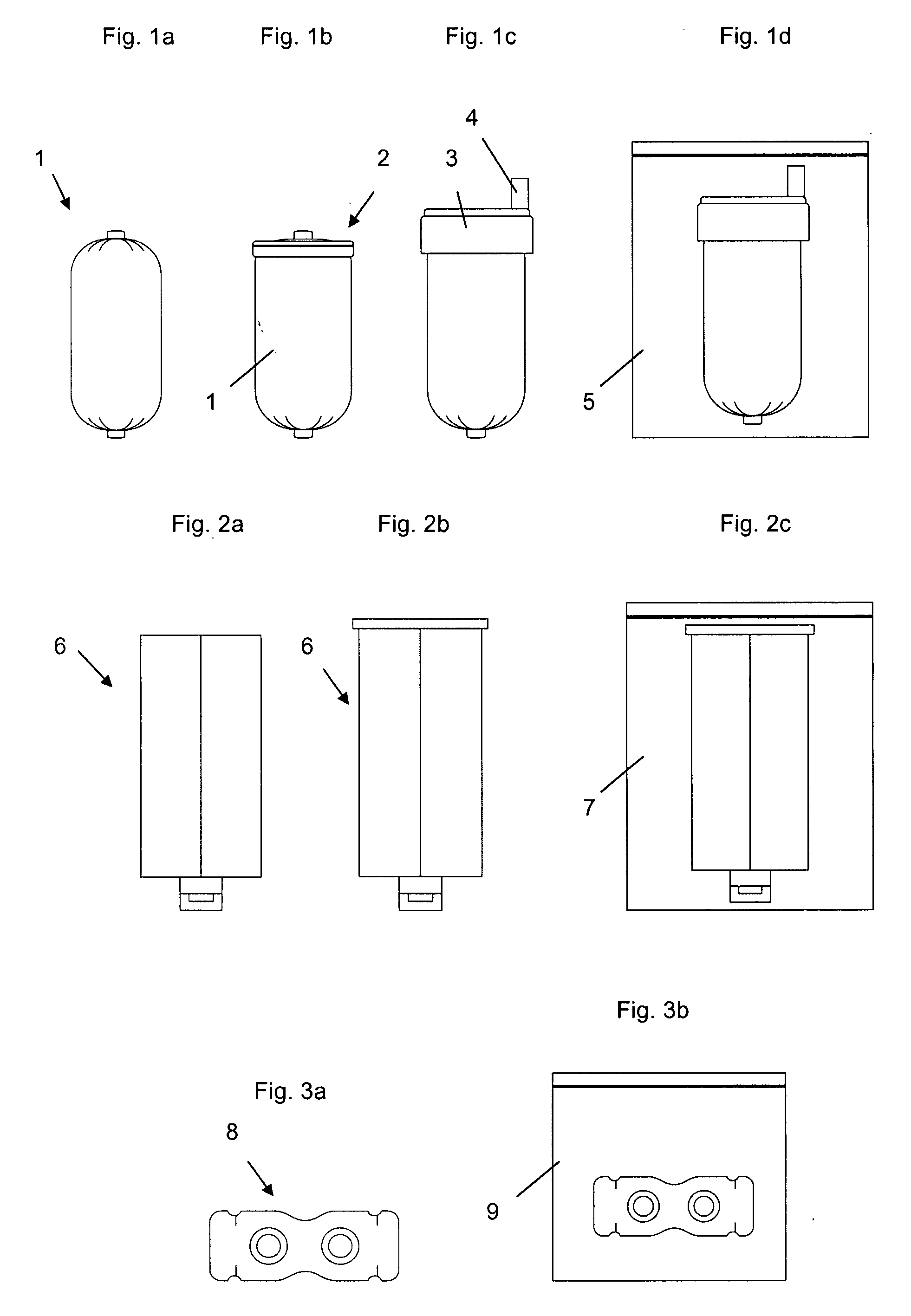[0014]It is therefore an object of the present invention to make available a method for sterilizing medical single-component or multi-component impression materials that can harden, in which both the single-component or multi-component material and its surrounding packaging (primary packaging) and, if applicable, also any equipment used for the application, are reliably sterilized, without the occurrence of any prior damage, particularly pre-cross-linking, reduced storage stability, changes in
viscosity, or changes in reactivity of the single-component or multi-component material or damage to the equipment.
[0015]This object is accomplished according to the invention by a method having the following steps: Packaging of the components, individually or jointly, in at least one heat-resistant packaging, wherein at least one of the packagings is gas-tight, and subsequent sterilization of the components by heat, preferably
dry heat, at a temperature greater than 138° C., and at approximately normal pressure. Sterilization at the high temperature greater than 138° C., according to the invention, has the
advantage that not only outer regions of a component, for example one accommodated in a tubular bag or a
cartridge, but also its core will be sufficiently heated to sterilize the component. In this connection, the gas-tight packaging prevents oxidation of the components with the
ambient air. Different packagings can be used for the method according to the invention. For example, the components can be accommodated directly in a heat-stable
cartridge, which is as gas-impermeable as possible, which is fluoridated and has openings closed off with an aluminum laminate foil. Alternatively to this, it is also possible to accommodate the components in a tubular bag or another suitable bag made of a
metal laminate foil.
[0017]According to a preferred embodiment of the method according to the invention,
ambient air is preferably removed almost completely from the packaging before the packaging is sealed in a gas-tight manner, and / or the packaging is filled with
inert gas. In this way, an oxidation reaction of the components, which could make these unusable, is avoided in a particularly effective manner. The residual air can be is forced out of the packaging to a great extent, by way of a soft punch, for example a
foam rubber punch, so that only small residual amounts of air, if any, remain in the packaging. However, it is preferred if the residual air is drawn out of the packaging at least almost completely and / or the packaging is filled with
inert gas.
[0028]The
treatment time in this second step can be significantly less than that of the first sterilization step. In this connection, a
treatment time of less than or equal to one hour, particularly less than or equal to 30 minutes, and particularly preferably less than or equal to 10 minutes is preferred. In this way, the possibility of damage to the materials, particularly of the impression materials, is prevented, for one thing, and for a second thing, an acceptable total duration of the
sterilization process is achieved, with simultaneous sufficient sterilization quality.
[0030]Preferably, the accessories needed for application of the impression
mass, such as a dynamic or
static mixer, impression tray, activation heads, cartridges and / or cartridge bodies, are also introduced into the
secondary packaging. Because the second sterilization is shorter and gentler with regard to temperature, in comparison with heat sterilization, than that applied during the first step, these accessories do not suffer any damage, even if they are not produced from heat-resistant material.
[0043]The at least one stabilizer and the at least one
hydrosilylation catalyst, for example a
platinum divinyl
disiloxane complex, particularly a
platinum divinyl tetramethyl
disiloxane complex, are coordinated with one another in such a manner that during sterilization using the method indicated above, no noteworthy pre-cross-linking takes place, so that the activity of the
hydrosilylation catalyst, i.e. the ability of the vinyl and SiH groups to cross-link, essentially does not change. In other words, the hardening time does not lengthen or shorten by more or less than one minute. Furthermore, the change in
viscosity of the individual components A and B amounts to less than approximately 20%, preferably less than 10%, very particularly preferably less than 5%. The components, particularly the catalyst, are therefore not damaged by the sterilization or made unusable by means of pre-cross-linking, so that the impression material according to the invention remains stable in storage for a sufficiently long time, particularly for at least approximately 24 months.
 Login to View More
Login to View More 

